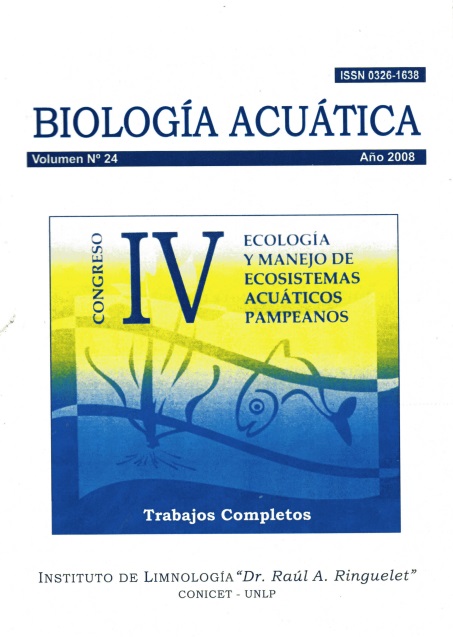Ensayos de toxicidad de sedimentos con Hyalella pseudoazteca con cobre como tóxico de referencia
Palabras clave:
sediment toxicity bioassays, spiked sediment, amphipoda, Hyalella pseudoazteca, Copper, bioensayos de toxicidad de sedimentos, sedimentos adicionados, anfípodos, CobreResumen
The suitability of Hyalella pseudoazteca as a test organism for sediment toxicity bioassays and the employment of the sediment from Las Flores stream as a solid control matrix were evaluated. The animals were collected from Las Flores stream and acclimated to the conditions of the laboratory. The toxicity of spiked sediments with two concentrations of Cu2+ (25 y 75 mg Cu2+/Kg dry sediment) was tested. The samples used were physicochemically analyzed and their contaminants content determined. The assay was run with five replicates on each treatment at constant temperature and photoperiod (23±1ºC; 16L/8D). The exposition time lasted ten days and for each replicate it was determined survival, biomass (dry weight) and length increase rates as end points. On the assay’s initial and final time, hardness, pH, DO, NH4 + concentration, and conductivity were measured. The statistical significance relative to control was evaluated by means of ANOVA and Tukey’s comparison test. No effect on survival was registered. There was a significant decrease of the biomass of the animals exposed to 75 mg Cu2+/Kg. The length showed a tendency to decrease in both concentrations. From the obtained results it could be concluded that Hyalella pseudoazteca is a sensitive species for the assessment of spiked sediment toxicity assays with Cu2+, being this toxic apt as reference in assays with this species. Las Flores stream’s sediment proved to be adequate as negative control sediment because of its negligible level of chemical pollution and its granulometric composition.






















